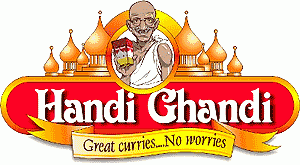This post builds on the research article “Branding the Mahatma: The Untimely Provocation of Gandhian Publicity,” which was published in the February 2010 issue of the Society’s peer-reviewed journal, Cultural Anthropology.
Editorial Overview
In "Branding the Mahatma: The Untimely Provocation of Gandhian publicity," William Mazzarella explores the legacy of Mahatma Gandhi's actions and philosophies in our contemporary moment. Mazzarella guides us through varying responses to a recent scandal in which a US-based corporation, CMG Worldwide, sought to license Gandhi's likeness to corporate clients. For some, using Gandhi to promote a variety of commodities and brands was "incongruous, even borderline blasphemous." But as one Indian advertising executive offers, Gandhi could also be considered the world's first "superbrand." Whether valorized, condemned, or portrayed as outdated, the popular image of Gandhi as a non-violent, austere, father of the Indian nation is undeniably ubiquitous. Mazzarella illustrates why this popular image of an otherworldly Gandhi is not impervious to a commodifying, branding logic, showing how these popular notions of Gandhi elide what is at the heart of his politics and public charisma. "Gandhian publicity", which is based on the discipline of bramacharya, serves as the crux of Gandhi's ethical and political praxis and communicative efficacy. As Mazzarella describes"Gandhi intended his bodily practice not as a recipe for solipsistic self-enclosure but rather as a doorway to public communication with a view to social change." Mazzarella's essay is at once about the politics of globalization, consumption, and public culture, as well as the power of corporeal politics and practices. "Branding the Mahatma" brings to light what others have claimed has been an erasure of a critical and an essential aspect of Gandhi's political philosophy and social efficacy.
Editorial Footnotes
Cultural Anthropology has published a number of other essays on branding, advertising, and commodification; see in particular "Pesticides in Coca-Cola and Pepsi: Consumerism, Brand Image, and Public Interest in a Globalizing India" by Neeraj Vedwan (2007); "The Work of the New Economy: Consumers, Brands, and Value Creation" by Robert J. Foster (2007); "Fijian Water in Fiji and New York: Local Politics and a Global Commodity" by Martha Kaplan (2007); and "Animated Indians: Critique and Contradiction in Commodified Children's Culture" by Pauline Turner Strong (1996).

Questions for Classroom Discussion
1. Discuss some of the responses to the attempt to use Gandhi's image for branding purposes. In particular discuss the reactions of those who accepted this move and those who did not. What were the reasonings behind these varied responses?
2. What aspects of Gandhi and Gandhi's image were amenable to the logic of branding and commodification? Why? How could Gandhi be interpreted as the world's first "superbrand?"
3. Visit www.mkgandhi.org Read about bramacharya. What is it? And How does it work? How is it integral to Gandhi's charisma and mass public appeal, especially during India's independence movement?
4. Discuss, then, the notion of "Gandhian publicity" as it is given by the author, Mazzarella. Upon what is this "publicity" premised?
5. How does neoliberal branding serve to erase "Gandhi's body?" What is lost in "celebrations of Gandhi qua brand?" What is the crucial difference, then, of brand Gandhi and Gandhian publicity?
6. What is a critical body politics? What is Gandhi's critical body politics? How does Gandhi's critical body politics resist appropriation by neoliberal branding and commodifying logics?
This page is not brought to you by:
